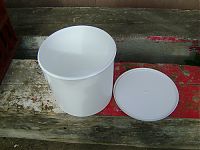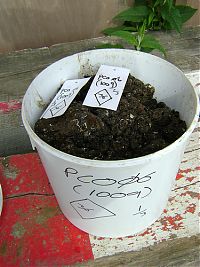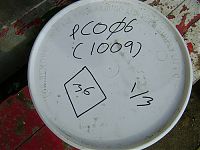We care about the environment
- By: Fergal O'Donoghue |
- Jun 10, 2008
- Share
- del.icio.us

Most people are familiar with the finds that archaeologists excavate, indeed there are many pictures on this website of shards of pottery, pieces of ceramic building material (CBM), animal bone, human remains etc. But there is another item which archaeologists take from site; that is the soil, which is more accurately described as environmental sampling. Basically this involves digging up and saving soil from a fill, which is then sent off to be examined.
There is a wealth of information which can be gleaned from an environmental sample. Essentially the sample will contain items which the naked eye cannot see, such as seeds which would provide evidence of a particular type of agricultural activity taking place in an area. For sampling at Prescot Street, usually three ten litre buckets are filled and are then sent off to Steve Campion, L – P : Archaeology’s environmental archaeologist in Cambridge, who puts the samples through a filtration process which separates the minute items from the soil.
Environmental sampling is a complementary process to digging and enables archaeologists to form a clearer picture of the site. Indeed sampling is like placing a microscope over site and being able to see the finer details which would have been impossible to tell from the finds which field archaeologists encounter. Thus environmental sampling provides an invaluable service in interpreting an archaeological site.
Find out more about the process with Steve’s article Happy as a Pig In


